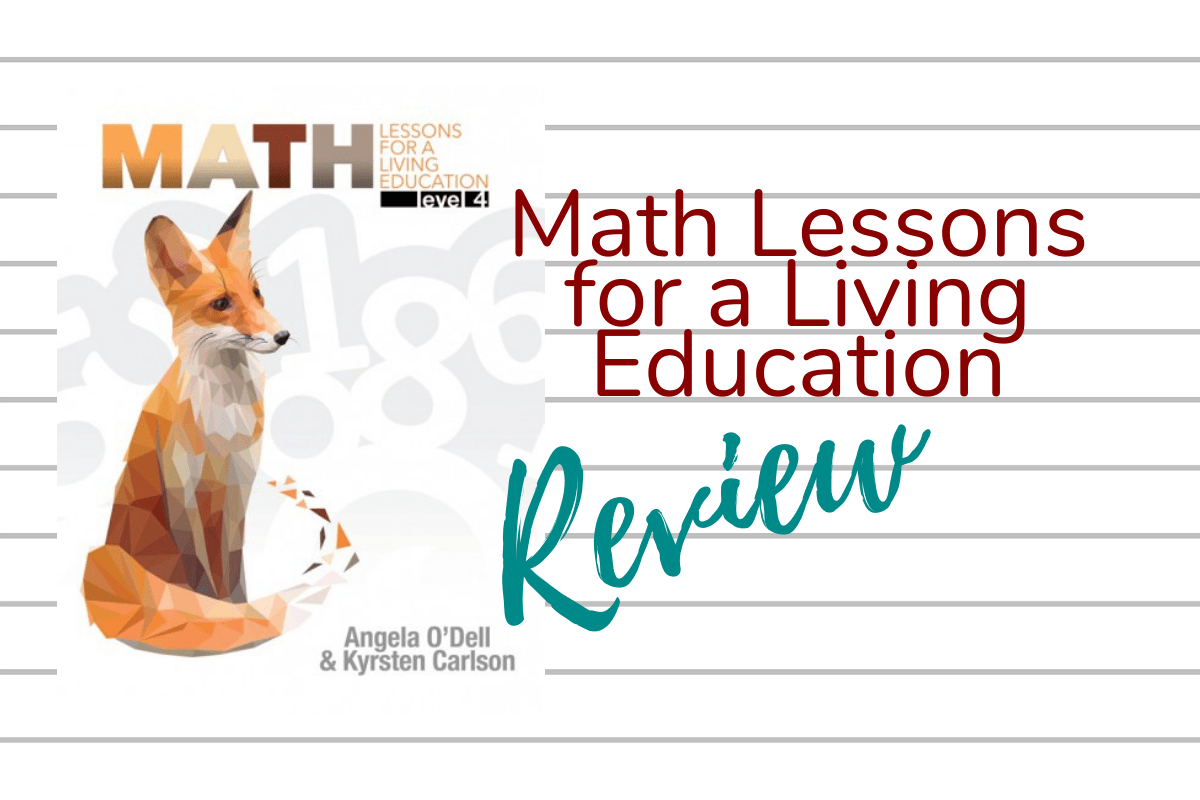
Math is a critical course for even elementary students, but homeschool parents struggle to make the course inviting. It seems like the only options are worksheet by worksheet, memorize the facts, and limited application. Classical and Charlotte Mason homeschoolers, in particular, find the subject at odds with their teaching methods.
Until now.
Math Lessons for a Living Education
 With Math Lessons for a Living Education, homeschoolers can, at last, provide meaningful, engaging lessons in mathematics. This colorful, gentle curriculum provides comprehensive instruction in a practical format. With practical examples and fun stories, the curriculum builds skills while teaching fun character lessons without sermonizing or boring the student.
With Math Lessons for a Living Education, homeschoolers can, at last, provide meaningful, engaging lessons in mathematics. This colorful, gentle curriculum provides comprehensive instruction in a practical format. With practical examples and fun stories, the curriculum builds skills while teaching fun character lessons without sermonizing or boring the student.
Each book in the series begins with a quick explanation how to use the course. This explanation is completely unnecessary because the workbook is so simple to understand.
Next follows the parent lesson plan pages, a brief listing of assignments with boxes for the student to check when completed and the parent to record grades. This is broken up into quarters for those following a traditional school year.
Every week begins with a story, a continuing series about a family that includes character-building stories and examples of math in real life. The daily lessons typically include one or two brief pages that include new material and review problems. The fifth day usually consists of a puzzle or other fun activity.
Solutions and manipulative worksheets are included in the back of the book.
My student had used Saxon math successfully before I switched him to Math Lessons for an Early Education his fourth-grade year. A precocious learner, he had experienced no problems with Saxon. However, I wished to slow down his progress since eleven-year-olds have not developed the reasoning skills for conceptual math like algebra and geometry.
My son was drawn to his math book, asking daily when he could start “fox math” as he named it from the cover image. When he began, however, he found the lessons quick and easy. Though the curriculum advises the lessons will take 30 minutes for the average user, he breezed through a week’s worth of lessons in only 15 minutes per day. After the vigorous work of Saxon, both he and I viewed this as a welcome change. Young students don’t need to work harder at math; they need to find enjoyment in applying math principles.
After quickly completing Math 4, he moved into Math 5. Though he continued doing a week of assignments each day in the beginning, he soon encountered new material. That is when we began using the curriculum as intended: one day at a time. He still enjoyed the lessons and learned a lot while completing his subject in 10-15 minutes.
I, on the other hand, rarely had to help him with his math. The explanations and examples are so simple for good readers, the student can conquer even new material successfully. Even if I had to read the instructions and explanations to him, we could have finished a page in less than 20 minutes.
Why am I making such a big deal about the time? Because math shouldn’t be hard. And even more importantly, young students do not need to spend more time sitting at a desk working on a worksheet. They need more time to play and explore the world around them. Author Angela O’Dell agrees, and she provides an excellent way for students to learn the basics and prepare for advanced math while keeping the subject simple.
Math Lessons for a Living Education would work well, also, with students who are math-adverse or who struggle with math completely. The simple and easy lessons, presented on full-color sheets with few problems each day help build confidence. This curriculum puts the fun back into math.
Since the lessons are so fast and easy, I was concerned in the beginning that my student was not receiving sufficient review. But remember, I came from 15 years of Saxon math, which is all about review. I was wrong; even the math my student found difficult (showing his work in long division) was strengthened considerably by the end of the book. Each review lesson showed he retained what he had learned over several weeks.
Math Lessons for a Living Education comes in a consumable workbook graded for approximate school grade level. Placement tests are available for each level on the publisher’s website. For an all-in-one curriculum, this product is extremely economical. The workbooks are available directly from the publisher for $36.99 (currently on sale for $27.37) or on sale from Amazon. Downloadable versions are available from the publisher for $25.89.
You can preview each book on the publisher’s website. You will find the grade 4 preview pages and placement test here.
Disclosure: I received a copy of this curriculum from the publisher for my own consideration. These opinions are my own. Affiliate links help support this site.


I have a 6th grader that does Saxo and it seems to work ok for her. I’m using this curriculum for my 2nd grader because she is extremely hands on and creative. I was all set to order her Abeka and then switched to this at the last minute. I have to admit, it almost seems too easy (based on my exposure to Abeka and Saxon) and I keep feeling like I need to add more. But I’m going to stick with it with my 2nd grader!
I know it seems so simple, but that’s the beauty! My son is doing sixth grade in it now, and he’s working toward pre algebra nicely. I really love how gently the curriculum moves the student along.
This is my biggest fear, that it will be too easy. Question why did you need to “slow him down”?
He was doing really well in math, but I didn’t want him to get to upper level math before he was developmentally ready. I knew he would still hit prealgebra plenty early. My instincts were right — he hit a mental block when he got in the middle of pre-algebra. 🙂